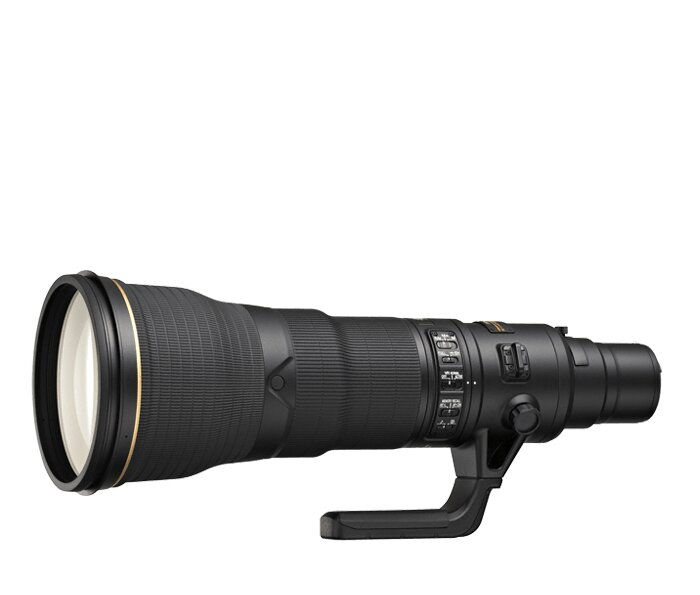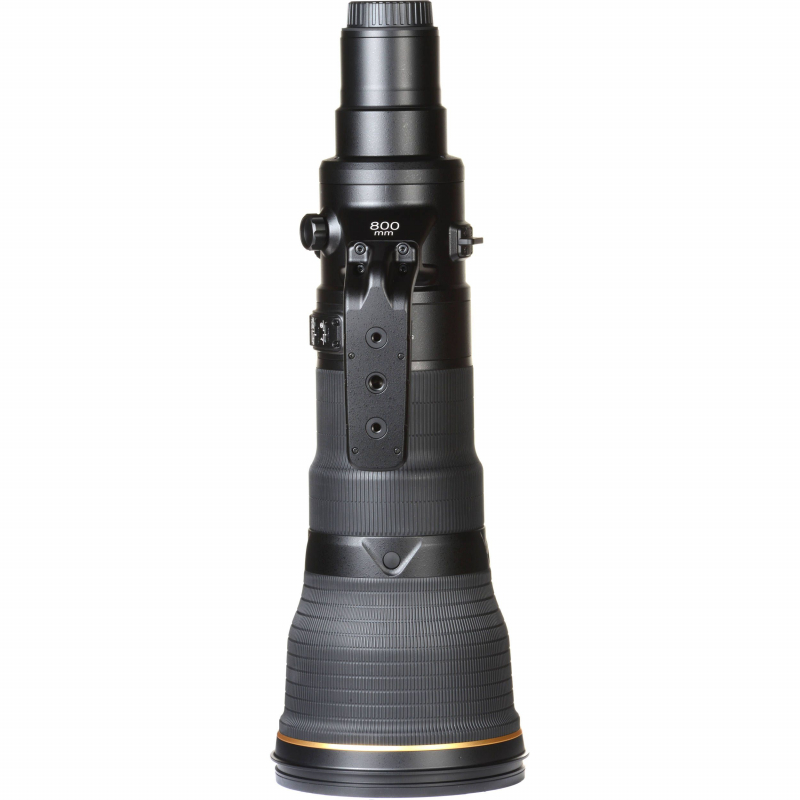Nikon AF-S Nikkor 800mm f/5.6E FL ED VR w/ 1.25 Teleconverter

To say this has been a long time coming would be an understatement. Nikon's manual focus 800mm f/5.6 ED-IF lens had not been changed in over a quarter-century. Nikon began promising the debut of an 800mm lens nearly a decade ago. An auto-focusing 800mm lens had been long overdue. The company certainly delivered.
Nikon has taken a huge step forward with the Nikkor 800mm. It is the company's first lens to employ fluorite elements in its optical design outside of medical and microscopy applications. It's also the first Nikon telephoto lens to deviate from the company's traditional mechanical diaphragm. It makes use of an electromagnetic diaphragm mechanism to provide precise electronic control. The accuracy with which this enables consistent, precise results over numerous exposures when shooting quickly in auto-focus is astounding, and a significant step forward. The 800mm is a lighter, more balanced, and easier to use lens than either the 600mm or 400mm that came before it, thanks to a narrower barrel and fluorite elements. Autofocus is quick, precise, and easy to use.
Despite the long wait, the ultimate product was unquestionably worthwhile. In terms of construction, design, and functions, Nikon has launched a telephoto lens that competes with Canon. Better still, it has developed one that outperforms Canon's own 800mm in terms of image quality. The integrated AF-S Teleconverter TC800-1.25E ED converts the lens to a 1000mm f/7.1 while keeping the 4.5 stops of VR and minimum focus distance. Even better, it works with the Nikon AF-S TC-14E III 1.4x, Nikon AF-S TC-17e II, and Nikon AF-S TC-20E III 2x teleconverters, giving you 1120mm f/8, 1360mm f/9, and 1600mm f/11 equivalents. The pricing shows the firm belief in this product. This optimism is justified, however, we believe the difference between Nikon and Canon telephoto lenses will narrow over time.
Cost: $16,296













